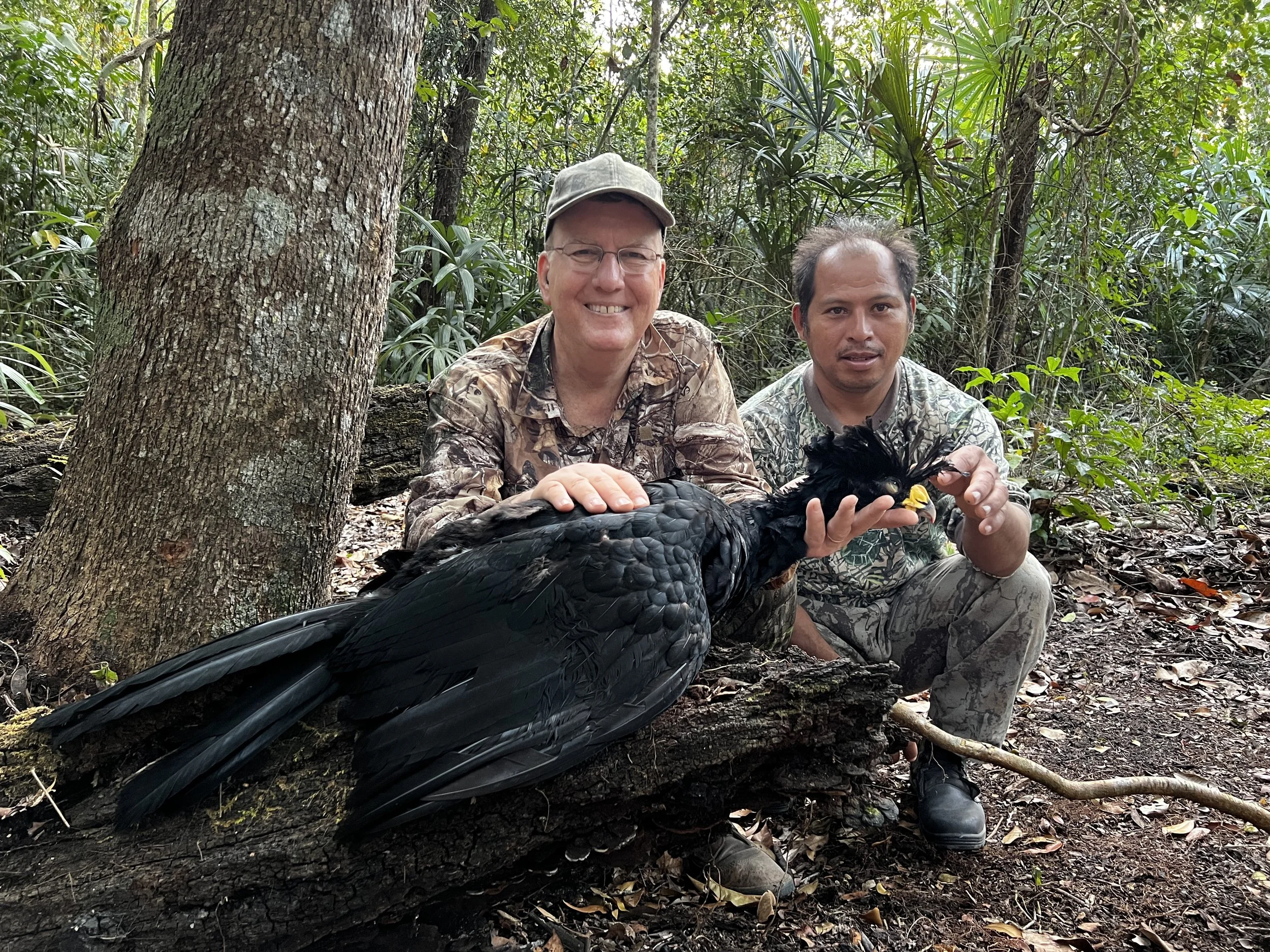Magnificent Birds of the Yucatán Tropics
As we stepped from the motorized punishment machine, my Mayan-guide, Tigre asked me to leave my headlamp off. I would use the residual moonlight and the faint glow from the rising sun to follow in his footsteps. As I walked in the near darkness, my mind wandered to the variety of venomous snakes I knew occurred in this region of Mexico, especially the common, aggressive, and very deadly Fer-de-lance. Locked into these encouraging thoughts, I almost stumbled over Tigre as he froze in rapt attention. I could barely make out his form when he raised his hand to his ear, smiled and whispered, “Hocofaisán” (Great Curassow). I asked “Hembra” (female) o “Macho” (male)? “Hembra” was his immediate reply. He slowly stepped down the trail, stopping repeatedly lifting his gaze to the treetops silhouetted against the lightening sky to the right of our path. Finally, even I could hear the group calls of the female Curassows.
Tigre knew I wanted a male Curassow if possible, but I knew that females were also legal game, and that they came in a myriad of plumage types, all beautiful. So, when he turned to me pointed and asked “Solo Macho?” I replied “Hembra es muy bien.” That is when my guide showed his wisdom in the face of a client incapable of walking quietly through the surrounding forest. Kneeling at the edge of the leafy forest floor, Tigre scraped a circle large enough to accommodate my size 12 boots. With hand gestures, he told me to wait, stepped into the cleared patch, knelt, and cleared another circle a stride’s length further on. He stepped into the second circle of cleared ground and waved me forward into the patch behind him. We slowly made our way up the slope leading toward the calling birds. Finally, Tigre reached into his pocket and removed something resembling a fat pen. Having used one for years in my lectures, I realized I was looking at a laser pointer. Tigre gestured toward the tree immediately in front of us, and I raised the shotgun to my shoulder. The laser pointer came alive, and that was when I finally saw the outline of the bird sitting on a branch 30-feet above where we stood. At the shot, I watched in shocked disbelief as the obviously unhurt female Curassow took flight. Out of the corner of my eye, I registered that another bird of similar size flew from the tree vacated by the female into another tree to our right. “Macho!” Tigre hissed, and resettled the laser pointer indicating a reprieve; his tone also suggested that I not waste any time. Pumping the shotgun made a tremendous noise in the now quiet forest. I breathed deeply and held on the center of the massive bird. At the shot, the Macho Hocofaisán fell out of the air, striking the ground with a resounding thud. The smile of relief on Tigre’s face was enormous. I suspect it matched my own. He pumped my hand and pounded me on the back, yelling “Muy bien, muy, muy bien!!”
Excerpt from “Trophy Birds of the Yucatán Peninsula.” Hunter’s Horn, 2022.
Mayan-Guide, Tigre, the Author and the Great Curassow Trophy

